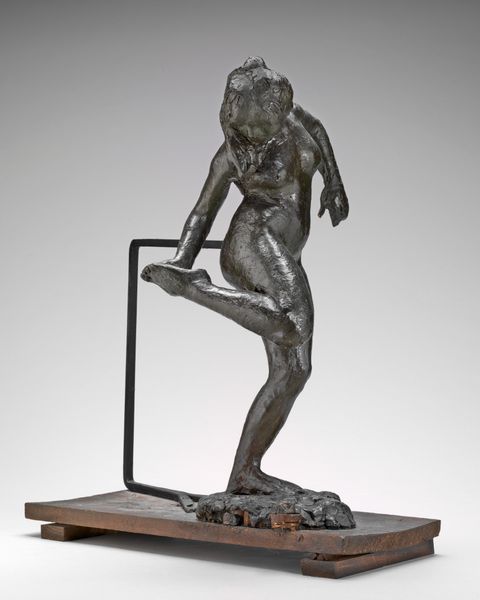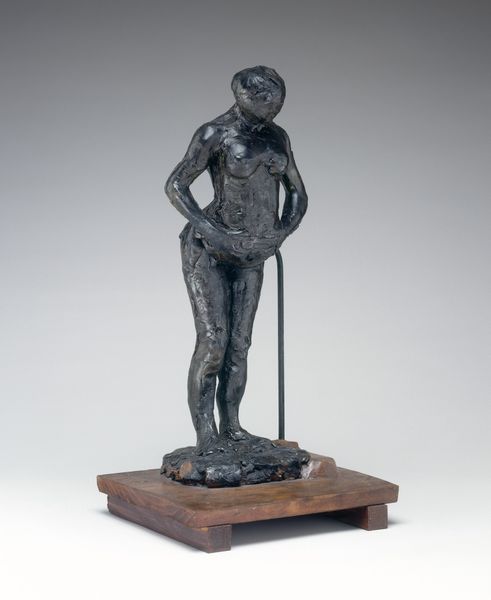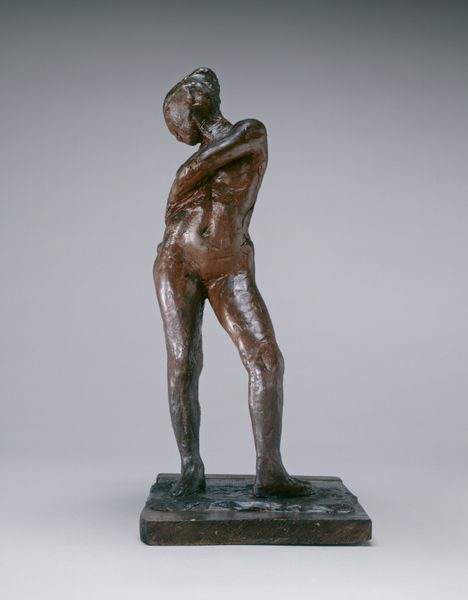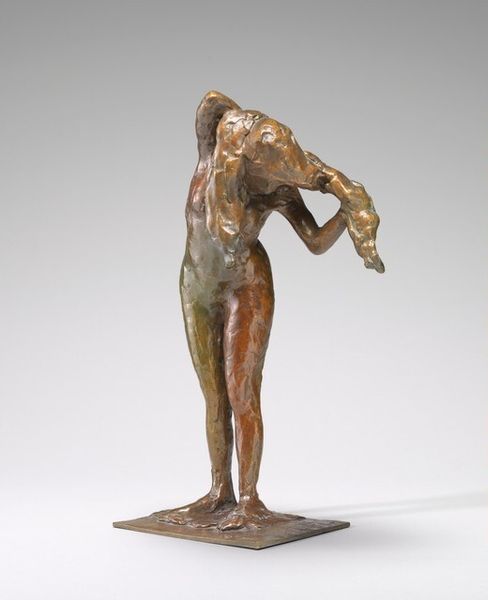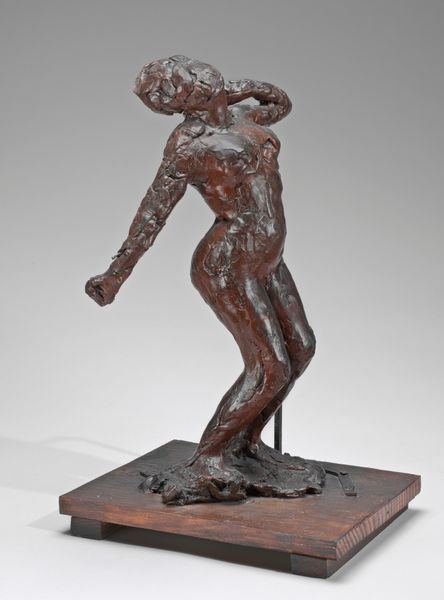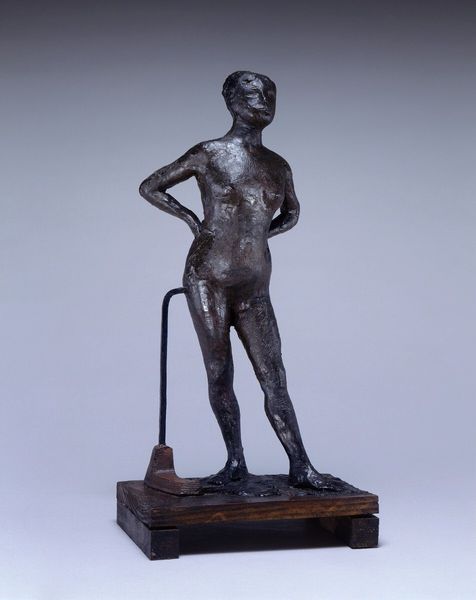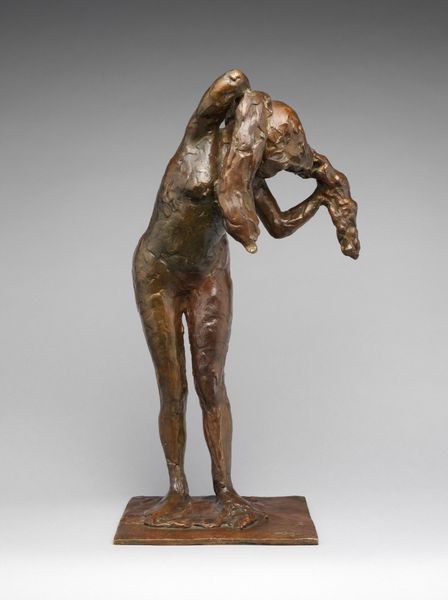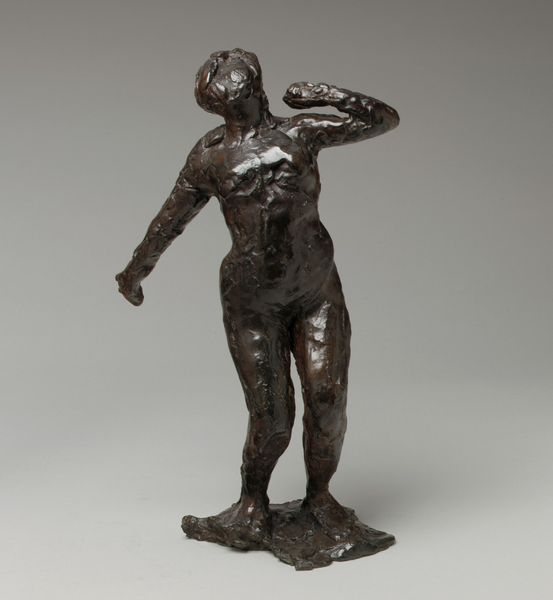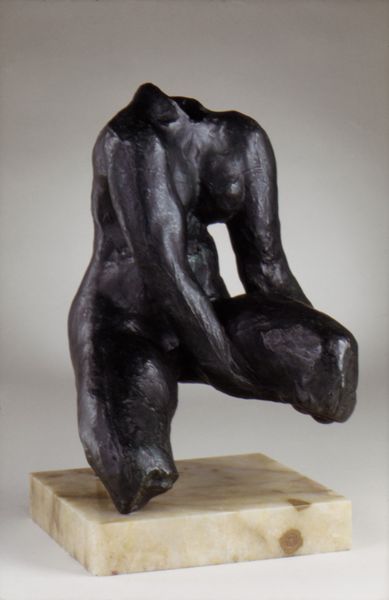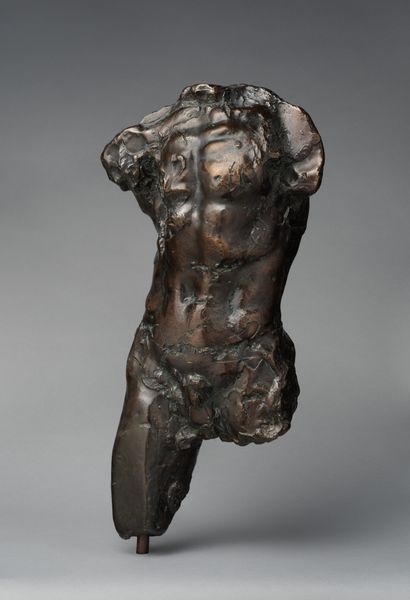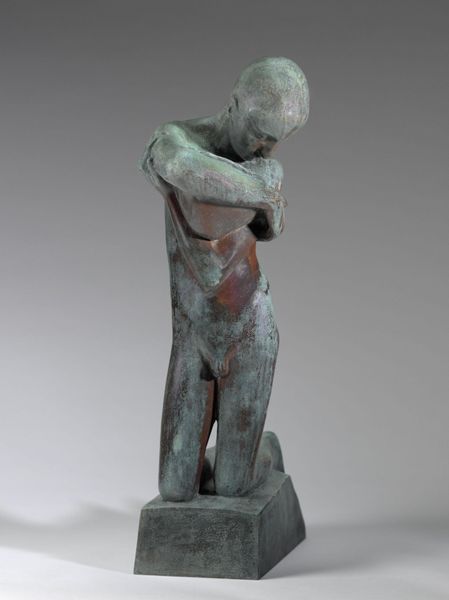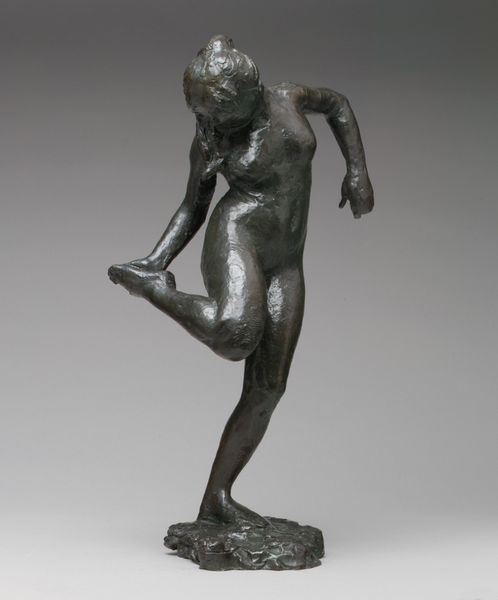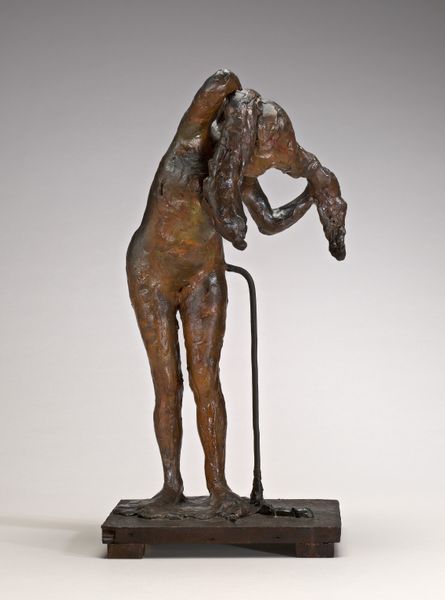
bronze, impasto, sculpture
#
impressionism
#
bronze
#
figuration
#
impasto
#
intimism
#
sculpture
#
nude
Dimensions: overall without base: 41.3 x 24.1 x 16.1 cm (16 1/4 x 9 1/2 x 6 5/16 in.) height (of figure): 41 cm (16 1/8 in.)
Copyright: National Gallery of Art: CC0 1.0
Curator: Here we have Edgar Degas' bronze sculpture, "Woman Taken Unawares," created sometime in the late 1880s or early 1890s. Editor: It's immediately striking. There's a sense of rawness to it. The hunched posture, the almost self-conscious gesture... It's vulnerable, exposed. Curator: That's typical of Degas' approach to the female form. He challenged traditional, idealized nudes, portraying women in unposed, private moments. It was part of a broader shift in Impressionism towards capturing everyday life. Editor: The bronze material lends a heft and solidity to the fleeting moment. You can practically feel the pressure of the hands on her abdomen. And I wonder about the materiality – bronze was traditionally associated with public monuments. What is Degas trying to monumentalize here? Curator: Exactly. Degas often defied those expectations. This work, shown posthumously along with many others, really redefined perceptions about his practice and his interest in bringing intimacy into the public sphere, albeit after his death. He’s disrupting the conventions of what sculpture should represent. Editor: The lack of smooth finish makes it seem more immediate, more tactile. You can almost feel the artist's hand in the clay. Did he conceive of this as inherently intimate work from the outset? Curator: In some respects, yes, and in others no. Many of his sculptural works weren't displayed during his lifetime. These works disrupt the public understanding and perception of the female body in art. This sculpture becomes a commentary on vulnerability, aging, and perhaps a critique of societal expectations. Editor: Looking at it now, that awkward pose really emphasizes the human quality, the lack of pretension. Bronze becomes an oddly appropriate, lasting testament to a transient, unglamorous reality. It shows labor in the studio, which transforms private observations into collective experiences and discourse. Curator: Precisely. This piece offers a compelling example of how artistic intentions and the material conditions surrounding it are inextricably linked. Thanks for these thoughts. Editor: And thank you, I hadn't thought about it that way. It’s fascinating how different lenses change our perspectives.
Comments
No comments
Be the first to comment and join the conversation on the ultimate creative platform.
